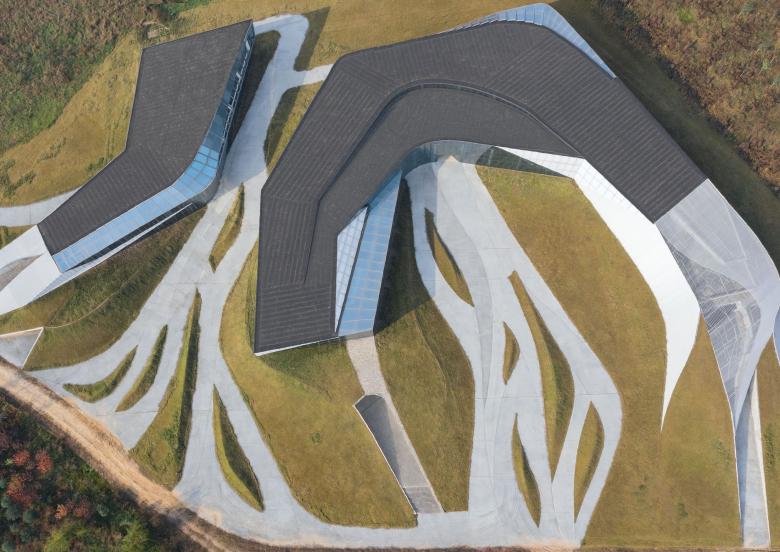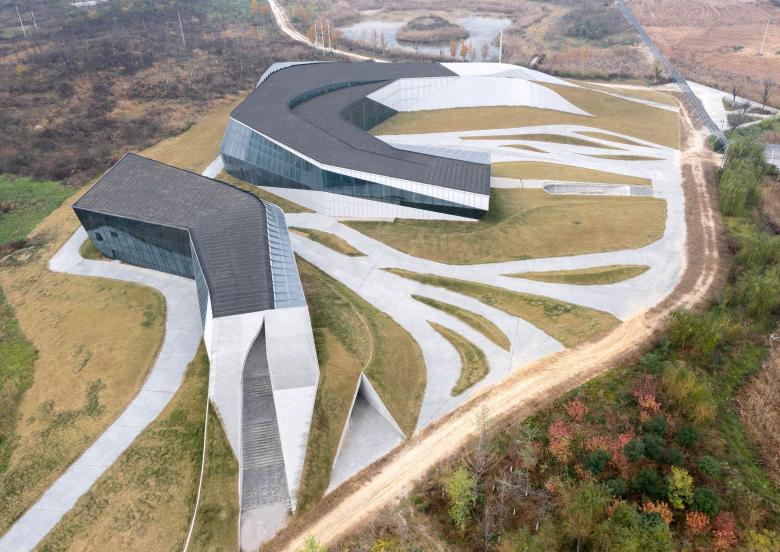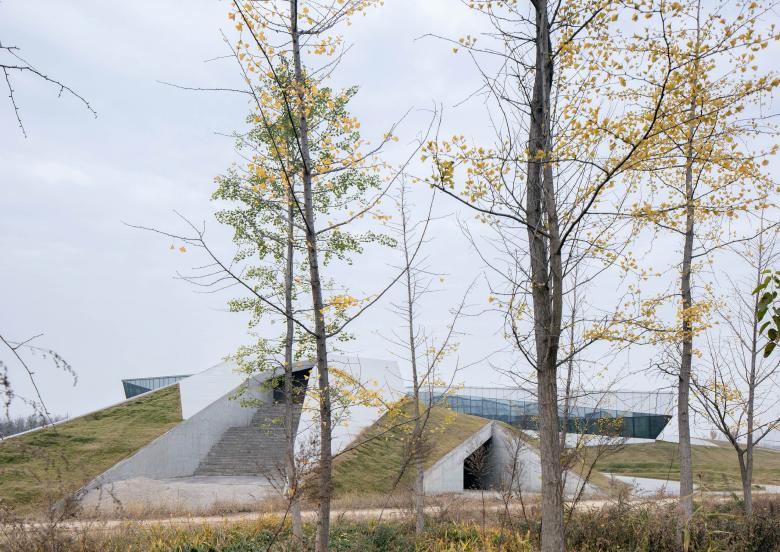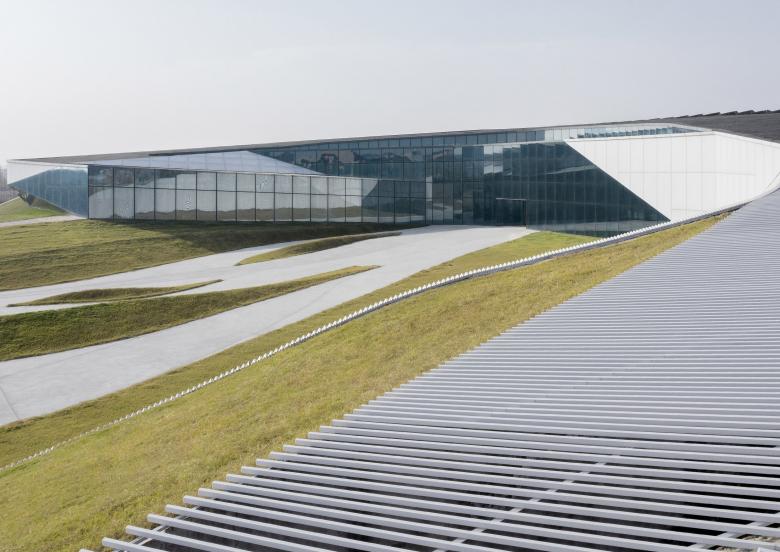Xixian Eco-Restaurant and Gate
Xi'an, 中国
Based on the eco-strategy of the overall park, the restaurant has as an organic set up, with a menu centered on Xian’s regional produce and the local ingredients harvested from the garden’s orchard and the in-house hydroponic glass box. The experience offered to dinners includes picking their own vegetables and following its cooking process.
The experience offered to dinners includes picking their own vegetables and following its cooking process. In addition to the dining experience, the project proposes some auxiliary activities such as a children playground and a greenhouse, both included in the internal layout of the restaurant. Such functions and their distinctive spatial requirements—both layout and materiality—are woven into the two ribbon like bodies converging by the entrance. Morphologically speaking, the building grows from the topography at the north, evolving into a sinuous body that splits creating a gap for natural light and a vertiginous volumetric drop at the entrance plaza. Toward the south, it sits onto an artificial higher elevation, hence allowing for a series of ludicrous spaces (children playground and greenhouse) that play with the slopes through some slanted surfaces, among which we locate the main access ramp to the upper floor. The butterfly house is located on the south outer ring of the building. With the comparison of the continuity on the north side, the butterfly house is inserted into the building as a glass case that brings the landscape indoors. At the same time, a series of spaces are generated as an integrated body that interweaves the landscape, the playground and the two main floors of the restaurant. Diagrammatically speaking, the building is a major arc with both of its end points at the lowest elevation (+0.00m) and its middle point at the highest elevation (+3.80m). The three-dimensional spatial distribution resembles a ascendant spiral movement which is actualized by a membrane that more than covering/enclosing the internal area of this arc, augments the rich plasticity of the diagram as such. On the north side, at one of the endpoints, this roof is generated by 5 curves that bifurcate from linescoming out of the surrounding topography. These curves runalong various elevations, working as a veritable extension of theground to the roof of the building showcasing striations and depressions—topographic features in themselves. At the south side, at the other end point, two of the controlling curves of the roof drop dramatically reaching the ground, while the other remaining curves stay at a higher elevation. The former movement generates a “valley”, as seen from the outside. From the inside, this depression articulates the ascendant spiral of the main ramp, onto which the children playground and greenhouse are unfolded.
- 建筑师
- Plasma Studio
- 年份
- 2014
- 客户
- Xixian the newly-developed
- Design Team
- Eva Castro, Ulla Hell, Holger Kehne, Libny Pacheco, Pietro Scarpa, Chuan Wang, Cesare Zilio, 景晟, 邹宇俊, 荆博, 瞿平山, 游雅
相关项目
杂志
-
-
Building of the Week
A Loop for the Arts: The Xiao Feng Art Museum in Hangzhou
Eduard Kögel, ZAO / Zhang Ke Architecture Office | 15.12.2025 -


















